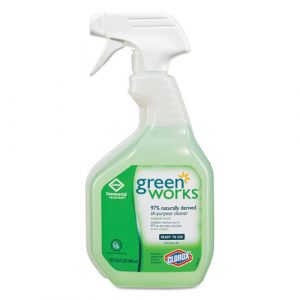
Greening Your Cleaning Routine?
Four Common Ingredients to Avoid
Spring has finally come and that means spring cleaning is on everyone’s mind. And with Earth Day being celebrated last month, lots of people are thinking about how the choices they make affect the environment. Why not combine the two and look at greening your cleaning routine?
Not only are sustainable cleaning products and methods environmentally sound solutions, they also offer benefits to employees, including better indoor air quality and reduced exposure to toxins. Making the switch to more environmentally-friendly cleaning supplies can seem confusing at first. There are a lot of buzz words out there. How do you know what to look for? We’re here to help with a breakdown of some of the most common label claims and what they mean.
The label reads: Low- or no-VOCs
Why should you avoid them? VOCs, or volatile organic compounds, are carbon-based chemicals that easily evaporate into the air. If the building or room being cleaned is improperly ventilated, the gases formed by the evaporation can be breathed in and cause both short- and long-term health problems, including eye, nose and throat irritation; headache; allergic skin reactions; nausea; and dizziness.
Where are they found? VOCs are commonly found in paint, cleaning supplies, copier and printer supplies, and office supplies including correction fluid, glue, and permanent markers.
The label reads No petroleum-based solvents
Why should you avoid them? The most important part of any cleaner is the detergent itself. Since WWII, most of these detergents (or surfactants) have been petroleum-based chemicals made from processing crude oil. Some of these compounds are relatively harmless to humans, but some can cause irritation and others can be toxic or cause health problems. Petroleum-based chemicals are also a source of VOCs.
Petroleum-based ingredients have serious impacts on the environment. Petroleum isn’t a renewable resource, and extracting and refining it leads to pollution. Petroleum-based ingredients that make their way into wastewater can pollute waterways.
Where are they found? Petroleum-based compounds can be found in almost all types of common cleaning supplies. Cleaners that use vegetable based oils, such as coconut oil, are a good alternative.
The label reads: No ammonia/No chlorine bleach
Why should you avoid them? Both ammonia and chlorine bleach are poisonous, and can cause severe eye and skin irritation or even burn skin. When mixed together, ammonia and chlorine bleach produce poisonous fumes that can be fatal. Chlorine bleach can also react with other chemicals in wastewater to produce toxic or cancer-causing compounds.
Where are they found? Both are found in many cleaners, including floor cleaners, bathroom and kitchen cleaners, glass cleaners, toilet cleaners, dish detergents, and mildew removers.
The label reads: Alcohol-free
Why should you avoid it? Alcohol can cause skin and respiratory irritation. It’s also flammable and can damage some surfaces if not properly diluted.
Where is it found? Alcohol is often found in spray cleaners, including all-purpose cleaners, glass cleaners, and disinfecting cleaners.
Sustainable cleaning products deliver the same great quality and performance as traditional products so you can make a difference without noticing a difference. If you want to head down a greener path, look for products made with natural or plant-based ingredients. Products with the Green Seal logo or the EPA Design for the Environment logo have been third-party tested for safety, so they’re a great place to start. We offer several green cleaning product lines, including these:
- Seventh Generation
- Method
- Green Works
- CLR


